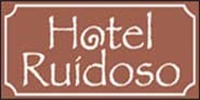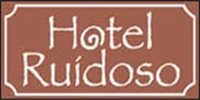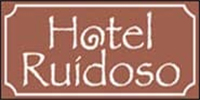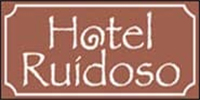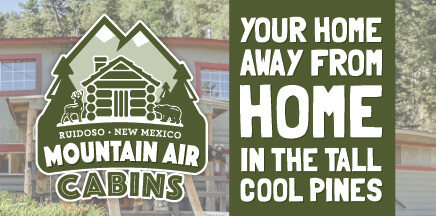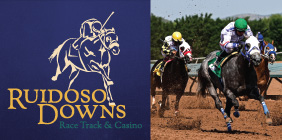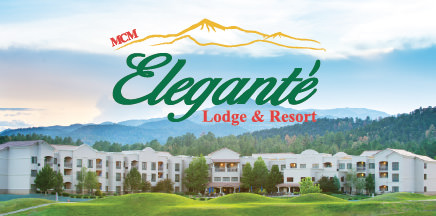By Johnny Hughes
The Argentina/Big Bonito Trailhead accesses the central portion of the White Mountain Wilderness Area. It is one of the most popular Trailheads in the Wilderness. Numerous loop opportunities can be created from the myriad of trails accessible from this Trailhead. Most of the trails are well used and easily followed, which makes it an ideal hiking location for novice to intermediate hikers. Advanced hikers will find lots of options as well.
To reach the Argentina/Big Bonito Trailhead from Ruidoso, take US Hwy 48 north approximately 5 miles past the Ruidoso Village limits, to the junction with Highway 37. Turn left onto Highway 37 and go approximately 1 mile to the intersection with Bonito Lake Road (Forest Road 107). Turn left onto Forest Road 107 and follow it approximately 9 miles to the Trailhead located at the end of the road. The road is narrow but paved until the final 4 miles. The last 4 miles of road consist of improved dirt but is passable by car. About a mile before the Trailhead, the deteriorating road will lead you through the middle of a bunch of dilapidated buildings and pens. Do not let this frightful sight alarm you. Forge straight through the middle of it all and the Argentina/Big Bonito Trailhead is a mile down the road.
The elevation of the Trailhead is approximately 7,820 feet.
Argentina Trail (#39)
Trail Distance - 2½ miles
Net Elevation Change - 1,080 feet
Highest Elevation - 8,900 feet
Argentina Trail (#39) originates at the Argentina/Big Bonito Trailhead and terminates at the intersection with Clear Water Trail (#42), just above Argentina Spring. The trail follows Argentina Canyon it’s entire length.
The trail is well defined and easy to follow. It is the easiest route to the Crest Trail from the Trailhead. Upper Argentina Canyon supports large numbers of aspen trees and although pretty any time of year, they are especially beautiful during the fall.
Water is present along the lower half of the trail as well as Argentina Spring. Argentina Spring consists of a series of seeps. The upper seep area is boggy and protected from livestock and/or horse damage by a log-fence enclosure. A small catch basin is present in the rocks below the enclosure where drinking water can be obtained during wet seasons. Springs below the enclosure may have water as well.
Camping locations are sparse along the lower half of the canyon. Decent camping spots are located near the intersection with Cut-Across Trail (#38). A sign marks the intersection. Water is usually not present in the stream between this intersection and Argentina Spring
Cut-Across Trail (#38)
Trail Distance - ¾ mile
Net Elevation Change - 380 feet
Highest Elevation - 8,640 feet
Cut-Across Trail (#38) is a short trail that connects Argentina Trail (#39) with Little Bonito Trail (#37). The intersections with both these trails are marked with a sign.
Similar to other trails in the area, it is well defined and easy to follow. The location of the trail is not correct on the Wilderness topo map. The actual intersection with the Argentina Trail is ½ mile further up Argentina Canyon than the map shows. The trail goes over the ridge between Argentina and Little Bonito Canyons, in the next saddle west, of the location shown on the map. Unless you’re paying attention to the map and the topography, the change is not noticeable nor important to most hikers.
The only camping option would be along the Little Bonito-Argentina ridge. Water resources along this trail are as sparse as camping locations. The only water would be in Argentina Canyon.
Clear Water Trail (#42)
Trail Distance - 1½ miles
Net Elevation Change - 540 feet
Highest Elevation - 9,160 feet
Clear Water Trail (#42) is a side loop off of Crest Trail (#25). The Clear Water Trail basically goes around the opposite side of a small peak than does the Crest Trail. It follows along a flat bench created by an erosion-resistant lava flow. The trail is relatively flat and easy to hike. Outstanding views of the Sacramento Range can be found along the Clear Water Trail.
Signs mark the intersections of the Clear Water and Crest Trails. Argentina Trail (#39) intersects with the Clear Water Trail at Argentina Spring.
Camping locations are abundant due to the multitude of level ground. A good camp location is ¼ mile east of Argentina Spring along the Clear Water Trail. There is enough area for an army to camp here.
Water can usually be found in Argentina Spring. A small catch basin is located just below the fence/log enclosure. Springs also are found ¼ mile below the basin down the Argentina Trail. No other water sources exist along the Clear Water Trail.
Big Bonito Trail (#36)
Trail Distance - 5 miles
Net Elevation Change - 1,580 feet
Highest Elevation - 9,400 feet
Big Bonito Trail (#36) climbs slowly up Bonito Creek. Bonito Creek is usually nothing more than a stream bed full of rocks in the vicinity of the trailhead.
Less than 1/4 mile from the Trailhead, the Big Bonito Trail passes a mine entrance located on the south side of the stream bed. This mine is called Bonita #1. The entrance is approximately four feet wide by five feet high. According to old records, the mine extends south into the hillside for about 40 feet and then turns 90 degrees toward the east for another 15 feet. Trace amounts of silver have been detected in recent samples collected from the mine. The floor of the mine is very rocky and would not make a suitable shelter for any length of time.
Approximately ½ mile up the canyon from the Trailhead, the previously dry creek bed from below is suddenly full of flowing water with several large pools. The canyon narrows at this point and the bottom is not covered in gravel anymore, thus you are able to see water as it is flowing along the bedrock. Downstream at the Trailhead, the water is merely flowing under the surface within the gravel deposits.
Approximately 1 mile west of the Trailhead, the crumbling head frame of the Silver Spoon Mine appears on the south side of the creek. The mine shaft is partially caved but is reported to be approximately 150 feet deep.
Approximately 1¼ miles from the Trailhead, the Big Bonito Trail intersects with Little Bonito Trail (#37). A sign marks the location.
Approximately 2 miles from the Trailhead, the trail intersects with Aspen Trail (#35).
The Big Bonito Trail continues 3 miles past the Aspen Trail intersection. There it terminates at the intersection with Crest Trail (#25) near Bonito Seep. The grade remains gentle as the trail follows the canyon bottom the entire length of the trail.
Small camping locations are numerous along the trail with the exception of the upper ½ mile of trail. Small, flat areas and running water provide the necessary requirements. Large campsites capable of accommodating multiple tents are limited.
Water is usually always present in Bonito Creek except for the ½ mile below Bonito Seep and near the Trailhead. Bonito Seep can be dry during droughts, but usually has small amounts of water.
Little Bonito Trail (#37)
Trail Distance - 1½ miles
Net Elevation Change - 760 feet
Highest Elevation - 8,780 feet
Little Bonito Trail (#37) is a relatively short section of trail that connects Big Bonito Trail (#36) with Crest Trail (#25). The trail is used primarily to make loop hikes with other canyons via the Crest Trail.
The trail is well used and easy to follow. Signs mark the intersections of the Little Bonito Trail with the Big Bonito Trail, Cut Across Trail and the Crest Trail.
The upper and lower segments of the trail follow near the canyon bottom. The middle third of the trail leaves the canyon bottom to traverse along the slope to the south.
Camping is marginal at best anywhere along the Little Bonito Trail. The upper reaches of the trail, near the intersection with the Crest Trail, provide level ground, but no water.
Water is usually always present in the bottom of the canyon along the lower third of the trail. The upper reaches of the trail are dry except during extremely wet periods.
Aspen Trail (#35)
Trail Distance - 2½ miles
Net Elevation Change - 1,700 feet
Highest Elevation - 9,900 feet
Aspen Trail (#35) is not a long trail, but the elevation change makes it a challenging hike. The trail is easy to follow and stays along the canyon bottom in the lower reaches. During mid to late summer, stinging nettle grows to heights above your head and literally engulfs the trail in places. Hikers in shorts will not enjoy themselves.
The upper reaches of this trail leave the canyon bottom and proceed through alpine meadows where opportunities to see elk or deer are excellent, especially early or late in the day.
Just beneath White Horse Hill, the Aspen Trail intersects with Crest Trail (#25) and Three Rivers Trail (#44). A sign marks the intersection.
An excellent campsite is located at the Bonito Creek/Aspen Canyon junction. Small campsites are present occasionally along the trail, but the steepness of the canyon does not provide many flat spots. Abundant level areas for camping can be found on top near White Horse Hill. However, no water is present here. Much of the top is open meadows and exposure to the elements can be an issue as well. Lightning and wind will present the biggest threats to campers.
The highest-elevation water source on this trail can be found where the trail leaves the canyon bottom and starts into the meadows. Water is typically always present in the creek along the lower reaches of the trail.
Crest Trail (#25) Bonito Seep to Turkey Spring Segment
Trail Distance - 6 miles
Net Elevation Change - 1,760 feet (880 feet up, 880 feet down)
Highest Elevation - 9,400 feet
The segment of Crest Trail (#25) extending from Bonito Seep to Turkey Spring, is used to create multiple loop hiking opportunities from the Bonito/Argentina Trailhead This trail segment primarily follows the spine of the Sacramento Mountains. You will literally be on the divide between the Rio Grande and Pecos River watersheds.
The best views of the backcountry are found along the Crest Trail. Much of the top is open meadows, so it’s easy to see lots of beautiful country. The trail is well defined and most intersections are signed.
The west-facing canyons plummet more than 3,000 vertical feet from the Crest Trail to the Tularosa Basin far below. Hiking anywhere on the west side of the Crest should be attempted by seasoned hikers only.
The majority of elevation gain occurs as the trail climbs up and down along the uneven ridge top. The grade is very gentle and hiking the Crest Trail along this reach is not as difficult as the elevation change implies. Close to half of the elevation change is downhill, regardless of which direction it is hiked.
Camping locations are abundant along most of the Crest Trail. The biggest obstacle to camping is the lack of water along the trail. The only water sources are marginal at best. Bonito Seep may have enough water to allow collection, but I have seen it dry as a bone during the droughts.
At the intersection of the Crest Trail and Barber Ridge Trail (#49), is a large, level camping site. A semi-reliable spring is present about 75 yards northeast of the camping site at the head of the draw that drains down into Lincoln Canyon. Again, great in wet seasons, possibly dry during drought.
Argentina Spring consists of a series of seeps. The upper seep area is boggy and protected from livestock and/or horse damage by a log-fence enclosure. A small catch basin is present in the rocks below the enclosure where drinking water can be obtained during wet seasons. Seeps below the basin are also present. The most reliable water source along this segment of the Crest Trail.
Turkey Spring also has a log fence enclosure protecting a seep area similar to Argentina Spring. A stock watering trough has been constructed below the enclosure and almost always has water in it. However, it is less than savory for human consumption. I wouldn’t rely on it as a source of drinking water.
Suggested Loop Hikes
The beauty of the Argentina/Big Bonito Trailhead is the huge number of loop hiking opportunities that can be created from the existing trail system. The loop hikes listed below are the best hikes, in my opinion, for each difficulty level. There are no bad options for the trails discussed above.
Easiest - Argentina Trail (#39) to Cut-Across Trail (#38) to Little Bonito Trail (#37) to Big Bonito Trail (#36)
Trail Distance - 4½ miles
Net Elevation Change - 1,640 feet. (820 feet up, 820 feet down)
Highest Elevation - 8,640 feet
Moderate - Argentina Trail (#39) to Crest Trail (#25) to Little Bonito Trail (#37) to Big Bonito Trail (#36)
Trail Distance - 6 miles
Net Elevation Change - 2,360 feet. (1,180 feet up, 1,180 feet down)
Highest Elevation - 9,000 feet
Difficult - Big Bonito Trail (#36) to Little Bonito Trail (#37) to Crest Trail (#25) to Big Bonito Trail (#36)
Trail Distance - 11 miles
Net Elevation Change - 3,600 feet. (1,800 feet up, 1,800 feet down)
Highest Elevation - 9,400 feet


